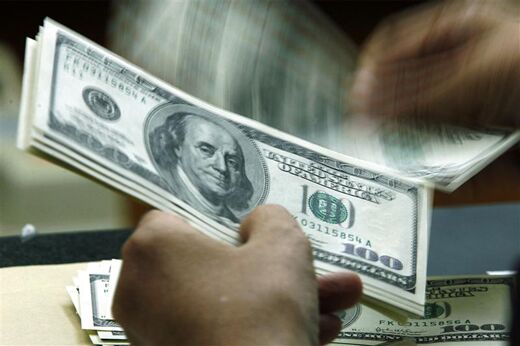
Dollar Support Wanes as World Economy Looks Elsewhere
America’s economy is running out of steam, according to warnings from the Organization for Economic Cooperation and Development (oecd). But that news might not be as bad you might think, the organization says—at least for the rest of the world. A U.S. bust won’t cause a global recession thanks to “a European resurgence and the boom in Asia,” the International Herald Tribune reported.
Slowing U.S. and accelerating EU economies have significant ramifications for the U.S. dollar.
The Paris-based oecd revised its 2006 growth forecast for the U.S. economy—which has been hit by the leading edge of a housing slump—to 3.3 percent, down from 3.6 percent. It is predicting a growth rate of just 2.4 percent for next year, and 2.7 percent for 2008. Since approximately 30 percent of all U.S. jobs created since 2001 have come as a result of the housing industry boom and since two thirds of the U.S. economy depends on domestic consumer spending, if U.S. housing continues to slow, the U.S. share of world imports could significantly slow too.
Fortunately for the world, if the oecd is correct, European and internal Asian demand will step up to the plate to replace American consumers as China’s and Japan’s export customers of choice.
European economic growth, driven in part by a productivity renaissance in Germany, is expected to grow from its 2005 rate of 1.5 percent to 2.2 and 2.3 percent in 2007 and 2008 respectively.
“Growth in productivity—a measure of output per hours worked—is the elixir that allows living standards to rise,” noted the International Herald Tribune (November 30). This, in turn, means an increase in consumer spending.
Over the past several years Germany’s industry has struggled to regain the competitive edge it seemed to have lost while absorbing East Germany during the 1990s. However, evidence is mounting that Germany is now experiencing a “significant productivity breakthrough that could increase the country’s economic growth potential over the long term” while hindering inflationary effects as it expands (ibid.). Some economists, and even the European Central Bank, “believe that Germany is better placed than at any time in the past decade to leap forward” (emphasis ours).
Additionally, evidence suggests that Europe may just be starting to reap benefits from globalization. Slower to embrace the trend, Europe has been able to learn lessons from the U.S. and not repeat the experience of massive manufacturing and now even service job outsourcing that has plagued American workers.
“It raises eyebrows when people hear it, but Europe is doing well from globalization and greater trade …. It stands to benefit much more in the future,” says Erik Nielsen, chief European economist with London’s Goldman Sachs.
“The European Union is coping with the challenges better than the U.S. or Japan,” says Morgan Stanley’s Eric Chaney. “Evidence that the European Union has suffered from globalization so far is scarce.”
Emerging economies like China, India and Russia are also anticipated to keep expanding rapidly. China’s gross domestic product is projected to grow at a 10.3 percent rate next year and a 10.7 percent rate in 2008. That figure for the Indian economy this fiscal year is is 8.1 percent, while the International Monetary Fund projects a 6.5 percent growth rate for Russia this year and next.
“Rather than a major slowdown, what the world economy may be facing is a rebalancing of growth” among the world’s largest industrialized nations, says the chief oecd economist Jean-Philippe Cotis.
But this rebalancing has possible negative consequences for the U.S. dollar.
Over the past several years, much of the world’s economic growth has been fueled by U.S.-China trade—a trade relationship that worked to keep the dollar strong in the face of U.S. economic imbalances, such as the annualized $781.6 billion trade deficit America will run this year.
Normally when a country has such a gargantuan trade imbalance, market forces act to rebalance the situation—one of the consequences being currency devaluation. This has not happened to the U.S. dollar, largely for one reason: The Chinese decided to not let the dollar fall. Instead they chose to take their exporting profits and use them to prop up the value of the dollar. This way, Americans could continue to purchase more Chinese-made goods.
Thus, conventional wisdom said that the U.S. and China had become so symbiotic that they could not do without each other. If China stopped supporting the dollar, Americans could not afford to purchase as many Chinese goods. If Americans did not purchase Chinese goods, the Chinese economy would collapse.
However, China is in fact already becoming less dependent upon American consumption. China’s exports to America are falling significantly—in 1999, they were 34 percent of China’s exports; today that figure is 25 percent (when adjusted for Hong Kong re-exports). Additionally, in 2005 the European Union replaced the U.S. as China’s top trading partner.
Due to a slowing U.S. economy, China’s percentage of exports to the U.S. could be about to diminish even further, possibly being replaced by demand from the EU, the rest of Asia, and within China. This means that for the Chinese, the importance of the U.S.-China symbiotic relationship may be waning. This is the real threat to the dollar.
As the Chinese become less dependent on the U.S. consumer, they will no longer need to hold so many dollars, or need to lend money to the U.S. to prop up the value of the dollar. Currently, China holds approximately $700 billion of its $1 trillion of currency reserves in dollars.
The same holds true for Europeans. If American consumption of European products slows down, and China’s, for example, increases, the need for Europeans to support the U.S. dollar is reduced too.
Maybe this is part of the reason China’s central bank recently warned about its decision to diversify its foreign currency reserves, which are mostly held in dollars.
For more articles on important trends within the American and global economies, visit our Economy section.
